formerly eScholarship Editions


|
|
|
|
Your search for
'Medieval Studies' in subject
found 44 book(s). | Modify Search | Displaying 21 - 40 of 44 book(s) | |
| 21. |  | Title: Renard the Fox Author: Terry, Patricia Ann 1929- Published: University of California Press, 1992 Subjects: Literature | Poetry | Literature in Translation | Medieval Studies Publisher's Description: Renard the Fox is the first modern translation into English of one of the most important and influential medieval books. Valued for its comic spirit, its high literary quality, and its clever satire of feudal society, the tale uses animals to represent the members of various classes. This lively and . . . [more] Similar Items |
| 22. | 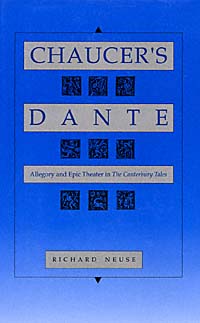 | Title: Chaucer's Dante: allegory and epic theater in The Canterbury tales Author: Neuse, Richard Published: University of California Press, 1991 Subjects: Literature | English Literature | European Literature | Medieval Studies Publisher's Description: Richard Neuse here explores the relationship between two great medieval epics, Dante's Divine Comedy and Chaucer's Canterbury Tales . He argues that Dante's attraction for Chaucer lay not so much in the spiritual dimension of the Divine Comedy as in the human.Borrowing Bertolt Brecht's phrase "epic theater," Neuse underscores the interest of both poets in presenting, as on a stage, flesh and blood characters in which readers would recognize the authors as well as themselves. As spiritual autobiography, both poems challenge the traditional medieval mode of allegory, with its tendency to separate body and soul, matter and spirit. Thus Neuse demonstrates that Chaucer and Dante embody a humanism not generally attributed to the fourteenth century. [brief] Similar Items |
| 23. | 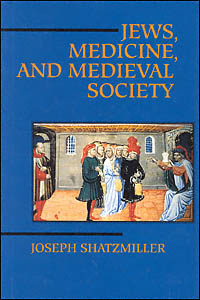 | Title: Jews, medicine, and medieval society Joseph Shatzmiller Author: Shatzmiller, Joseph Published: University of California Press, 1995 Subjects: Jewish Studies | Medieval History | European History | Medieval Studies | Medicine Publisher's Description: Jews were excluded from most professions in medieval, predominantly Christian Europe. Bigotry was widespread, yet Jews were accepted as doctors and surgeons, administering not only to other Jews but to Christians as well. Why did medieval Christians suspend their fear and suspicion of the Jews, allowing them to inspect their bodies, and even, at times, to determine their survival? What was the nature of the doctor-patient relationship? Did the law protect Jewish doctors in disputes over care and treatment?Joseph Shatzmiller explores these and other intriguing questions in the first full social history of the medieval Jewish doctor. Based on extensive archival research in Provence, Spain, and Italy, and a deep reading of the widely scattered literature, Shatzmiller examines the social and economic forces that allowed Jewish medical professionals to survive and thrive in thirteenth- and fourteenth-century Europe. His insights will prove fascinating to scholars and students of Judaica, medieval history, and the history of medicine. [brief] Similar Items |
| 24. | 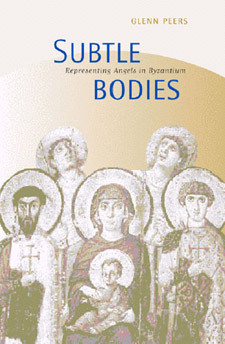 | Title: Subtle bodies: representing angels in Byzantium Author: Peers, Glenn Published: University of California Press, 2001 Subjects: Art | Medieval Studies | Art History | Christianity | Art and Architecture Publisher's Description: Throughout the course of Byzantine history, Christian doctrine taught that angels have a powerful place in cosmology. It also taught that angels were immaterial, bodiless, invisible beings. But if that were the case, how could they be visualized and depicted in icons and other works of art? This book describes the strategies used by Byzantine artists to represent the incorporeal forms of angels and the rationalizations in defense of their representations mustered by theologians in the face of iconoclastic opposition. Glenn Peers demonstrates that these problems of representation provide a unique window on Late Antique thought in general. [brief] Similar Items |
| 25. | 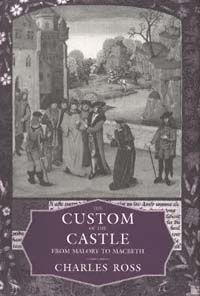 | Title: The custom of the castle: from Malory to Macbeth Author: Ross, Charles Stanley Published: University of California Press, 1997 Subjects: Literature | European History | English Literature | Medieval Studies | Renaissance Literature Publisher's Description: The "custom of the castle" imposes strange ordeals on knights and ladies seeking hospitality - daunting, mostly evil challenges that travelers must obey or even defend. This seemingly fantastic motif, first conceived by Chrètien de Troyes in the twelfth century and widely imitated in medieval French romance, flowered again when Italian and English authors adopted it during the century before Shakespeare's plays and the rise of the novel. Unlike other scholars who have dismissed it as pure literary convention, Charles Ross finds serious social purpose behind the custom of the castle.Ross explores the changing legal and cultural conceptions of custom in France, Italy, and England to uncover a broad array of moral issues in the many castle stories. He concentrates on single scenes that are common to a series of epics, showing how their nuanced narratives reflect real social limits of order, violence, justice, civility, and political conformity. His investigation of masterpieces from the thirteenth-century Lancelot to The Faerie Queene - by way of Malory, Boiardo, and Ariosto - demonstrates for the first time the impact on Shakespeare's plays, particularly Macbeth , of an earlier way of thinking about the strengths and weaknesses of social customs. [brief] Similar Items |
| 26. | 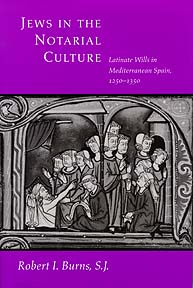 | Title: Jews in the notarial culture: Latinate wills in Mediterranean Spain, 1250-1350 Author: Burns, Robert Ignatius Published: University of California Press, 1996 Subjects: Medieval Studies | Judaism | Jewish Studies | European History | Law | Medieval History Publisher's Description: In the rapidly transforming world of thirteenth-century Mediterranean Spain, the all-purpose scribe and contract lawyer known as the notary became a familiar figure. Most legal transactions of the Roman Law Renaissance were framed in this functionary's notoriously hasty shorthand. Notarial archives, then, offer a remarkable window on the daily life of this pluri-ethnic society. Robert I. Burns brings together the testimony of a multitude of documents, and transcribes in full nearly fifty will-related charters prepared by notaries, to give a never-before-seen view of Jewish society in that place and time.Wills can display the religious conscience, ethical institutions, social mobility, and property dynamics of whole groups or regions. Even a single testament allows a glimpse into the testator's family and into the life and times of the living person. Burns devotes special attention to women in wills and to women's wills, extracting rich information on medieval women and gender relationships.While learning much about the role of kings and courts and the dynamics of Christian-Jewish relations, the reader also gains rare insights into a unique Jewish community. [brief] Similar Items |
| 27. | 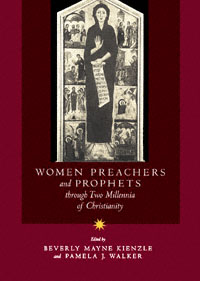 | Title: Women preachers and prophets through two millennia of Christianity Author: Kienzle, Beverly Mayne Published: University of California Press, 1998 Subjects: Religion | Women's Studies | Christianity | Classical Religions | History | Medieval Studies Publisher's Description: For nearly two millennia, despite repeated prohibitions, Christian women have preached. Some have preached in official settings; others have found alternative routes for expression. Prophecy, teaching, writing, and song have all filled a broad definition of preaching. This anthology, with essays by an international group of scholars from several disciplines, investigates the diverse voices of Christian women who claimed the authority to preach and prophesy. The contributors examine the centuries of arguments, grounded in Pauline injunctions, against women's public speech and the different ways women from the early years of the church through the twentieth century have nonetheless exercised religious leadership in their communities. Some of them based their authority solely on divine inspiration; others were authorized by independent-minded communities; a few were even recognized by the church hierarchy. With its lively accounts of women preachers and prophets in the Christian tradition, this exceptionally well-documented collection will interest scholars and general readers alike. [brief] Similar Items |
| 28. |  | Title: History, religion, and antisemitism Author: Langmuir, Gavin I Published: University of California Press, 1990 Subjects: History | Medieval History | Judaism | Sociology | Medieval Studies | Middle Eastern History Publisher's Description: Gavin I. Langmuir's work on the formation and nature of antisemitism has earned him an international reputation. In History, Religion, and Antisemitism he bravely confronts the problems that arise when historians have to describe and explain religious phenomena, as any historian of antisemitism must. How, and to what extent, can the historian be objective? Is it possible to discuss Christian attitudes toward Jews, for example, without adopting the historical explanations of those whose thoughts and actions one is discussing? What, exactly, does the historian mean by "religion" or "religious"? Langmuir's original and stimulating responses to these questions reflect his inquiry into the approaches of anthropology, sociology, and psychology and into recent empirical research on the functioning of the mind and the nature of thought. His distinction between religiosity, a property of individuals, and religion, a social phenomenon, allows him to place unusual emphasis on the role of religious doubts and tensions and the irrationality they can produce. Defining antisemitism as irrational beliefs about Jews, he distinguishes Christian anti-Judaism from Christian antisemitism, demonstrates that antisemitism emerged in the twelfth and thirteenth centuries because of rising Christian doubts, and sketches how the revolutionary changes in religion and mentality in the modern period brought new faiths, new kinds of religious doubt, and a deadlier expression of antisemitism. Although he developed it in dealing with the difficult question of antisemitism, Langmuir's approach to religious history is important for historians in all areas. [brief] Similar Items |
| 29. | 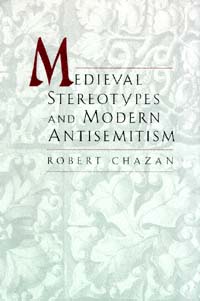 | Title: Medieval stereotypes and modern antisemitism Author: Chazan, Robert Published: University of California Press, 1997 Subjects: Medieval Studies | Jewish Studies | Medieval History | European History | European Studies Publisher's Description: The twelfth century in Europe, hailed by historians as a time of intellectual and spiritual vitality, had a dark side. As Robert Chazan points out, the marginalization of minorities emerged during the "twelfth-century renaissance" as part of a growing pattern of persecution, and among those stigmatized the Jews figured prominently.The migration of Jews to northern Europe in the late tenth century led to the development of a new set of Jewish communities. This northern Jewry prospered, only to decline sharply two centuries later. Chazan locates the cause of the decline primarily in the creation of new, negative images of Jews. He shows how these damaging twelfth-century stereotypes developed and goes on to chart the powerful, lasting role of the new anti-Jewish imagery in the historical development of antisemitism.This coupling of the twelfth century's notable intellectual bequests to the growth of Western civilization with its legacy of virulent anti-Jewish motifs offers an important new key to understanding modern antisemitism. [brief] Similar Items |
| 30. | 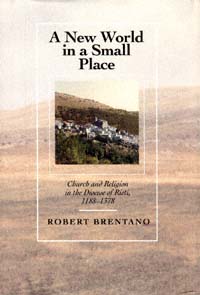 | Title: A new world in a small place: church and religion in the Diocese of Rieti, 1188-1378 Author: Brentano, Robert 1926- Published: University of California Press, 1994 Subjects: History | Religion | Christianity | European History | Medieval History | Medieval Studies Publisher's Description: Distinguished historian Robert Brentano provides an entirely new perspective on the character of the church, religion, and society in the medieval Italian diocese of Rieti from 1188 to 1378. Combing through a cache of previously ignored documents stored in a tower of the cathedral, he uses wills, li . . . [more] Similar Items |
| 31. |  | Title: Seven doors to Islam: spirituality and the religious life of Muslims Author: Renard, John 1944- Published: University of California Press, 1996 Subjects: Religion | Middle Eastern Studies | Middle Eastern History | Islam | Medieval Studies Publisher's Description: Seven Doors to Islam reveals the religious worldview and spiritual tradition of the world's one billion Muslims. Spanning the breadth of Islamic civilization from Morocco to Indonesia, this book demonstrates how Muslims have used the literary and visual arts in all their richness and diversity to communicate religious values. Each of the seven chapters opens a "door" that leads progressively closer to the very heart of Islam, from the foundational revelation in the Qur'an to the transcendent experience of the Sufi mystics. However, unlike most studies of Islam, which see spirituality as the concern of a minority of mystical seekers, Seven Doors demonstrates its central role in every aspect of the Islamic tradition. [brief] Similar Items |
| 32. | 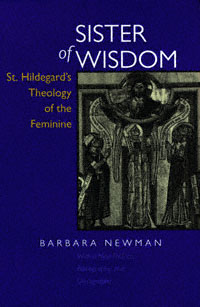 | Title: Sister of wisdom: St. Hildegard's theology of the feminine Author: Newman, Barbara 1953- Published: University of California Press, 1998 Subjects: History | Religion | Gender Studies | Women's Studies | Intellectual History | Medieval Studies Publisher's Description: Barbara Newman reintroduces English-speaking readers to an extraordinary and gifted figure of the twelfth-century renaissance. Hildegard of Bingen (1098-1179) was mystic and writer, musician and preacher, abbess and scientist who used symbolic theology to explore the meaning of her gender within the . . . [more] Similar Items |
| 33. | 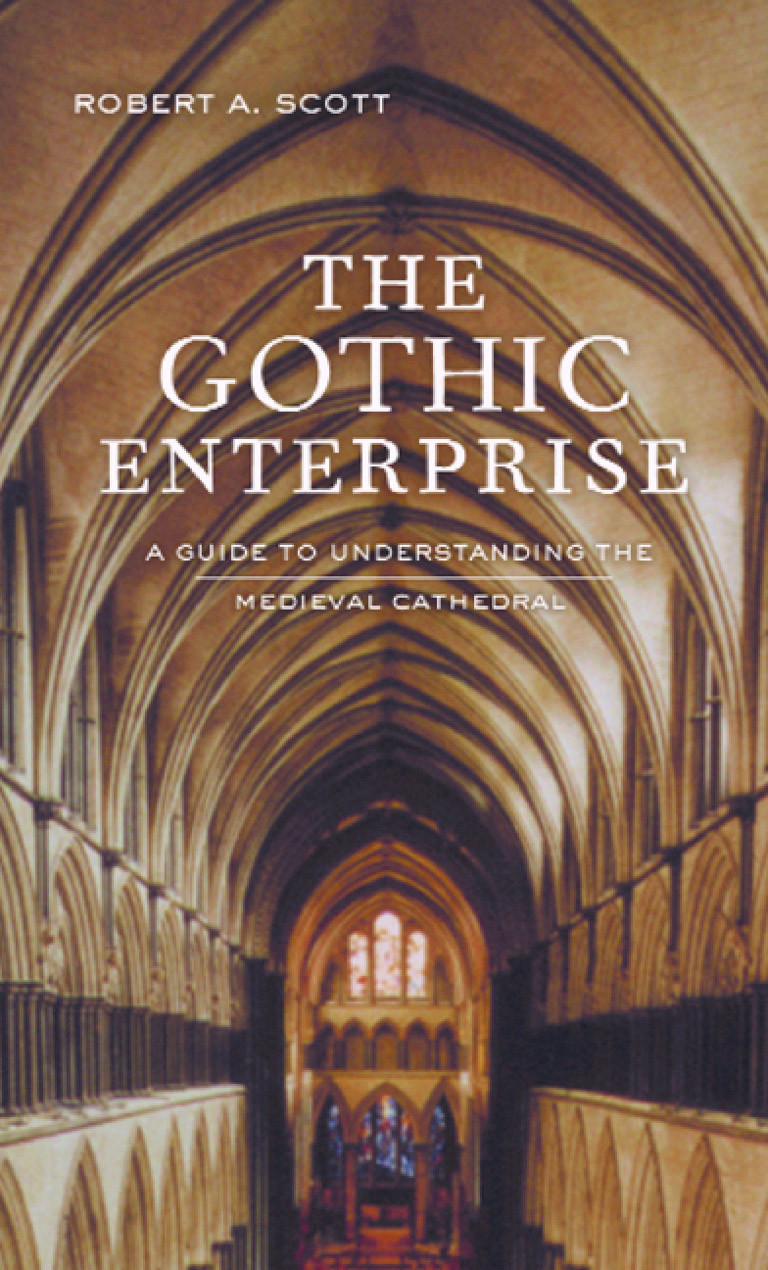 | Title: The Gothic enterprise: a guide to understanding the Medieval cathedral Author: Scott, Robert A 1935- Published: University of California Press, 2003 Subjects: Medieval Studies | Architecture | European Studies | Christianity | European History | Architectural History | Sociology | Sociology Publisher's Description: The great Gothic cathedrals of Europe are among the most astonishing achievements of Western culture. Evoking feelings of awe and humility, they make us want to understand what inspired the people who had the audacity to build them. This engrossing book surveys an era that has fired the historical imagination for centuries. In it Robert A. Scott explores why medieval people built Gothic cathedrals, how they built them, what conception of the divine lay behind their creation, and how religious and secular leaders used cathedrals for social and political purposes. As a traveler's companion or a rich source of knowledge for the armchair enthusiast, The Gothic Enterprise helps us understand how ordinary people managed such tremendous feats of physical and creative energy at a time when technology was rudimentary, famine and disease were rampant, the climate was often harsh, and communal life was unstable and incessantly violent. While most books about Gothic cathedrals focus on a particular building or on the cathedrals of a specific region, The Gothic Enterprise considers the idea of the cathedral as a humanly created space. Scott discusses why an impoverished people would commit so many social and personal resources to building something so physically stupendous and what this says about their ideas of the sacred, especially the vital role they ascribed to the divine as a protector against the dangers of everyday life. Scott's narrative offers a wealth of fascinating details concerning daily life during medieval times. The author describes the difficulties master-builders faced in scheduling construction that wouldn't be completed during their own lifetimes, how they managed without adequate numeric systems or paper on which to make detailed drawings, and how climate, natural disasters, wars, variations in the hours of daylight throughout the year, and the celebration of holy days affected the pace and timing of work. Scott also explains such things as the role of relics, the quarrying and transporting of stone, and the incessant conflict cathedral-building projects caused within their communities. Finally, by drawing comparisons between Gothic cathedrals and other monumental building projects, such as Stonehenge, Scott expands our understanding of the human impulses that shape our landscape. [brief] Similar Items |
| 34. | 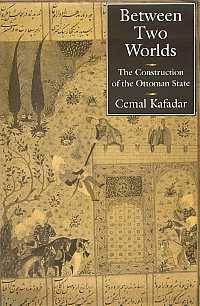 | Title: Between two worlds: the construction of the Ottoman state Author: Kafadar, Cemal 1954- Published: University of California Press, 1995 Subjects: History | Politics | Middle Eastern History | Middle Eastern Studies | Medieval History | Medieval Studies Publisher's Description: Cemal Kafadar offers a much more subtle and complex interpretation of the early Ottoman period than that provided by other historians. His careful analysis of medieval as well as modern historiography from the perspective of a cultural historian demonstrates how ethnic, tribal, linguistic, religious, and political affiliations were all at play in the struggle for power in Anatolia and the Balkans during the late Middle Ages.This highly original look at the rise of the Ottoman empire - the longest-lived political entity in human history - shows the transformation of a tiny frontier enterprise into a centralized imperial state that saw itself as both leader of the world's Muslims and heir to the Eastern Roman Empire. [brief] Similar Items |
| 35. | 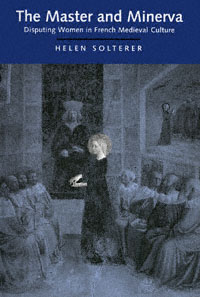 | Title: The master and Minerva: disputing women in French medieval culture Author: Solterer, Helen Published: University of California Press, 1995 Subjects: Literature | European Literature | Literary Theory and Criticism | Medieval Studies | Women's Studies | French Studies Publisher's Description: Can words do damage? For medieval culture, the answer was unambiguously yes. And as Helen Solterer contends, in French medieval culture the representation of women exemplified the use of injurious language.Solterer investigates the debates over women between masters and their disciples. Across a broad range of Old French literature to the early modern Querelle des femmes , she shows how the figure of the female respondent became an instrument for disputing the dominant models of representing women. The female respondent exploited the criterion of injurious language that so preoccupied medieval masters, and she charged master poets ethically and legally with libel. Solterer's work thus illuminates an early, decisive chapter in the history of defamation. [brief] Similar Items |
| 36. | 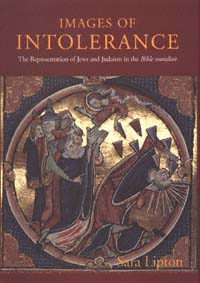 | Title: Images of intolerance: the representation of Jews and Judaism in the Bible moralisée Author: Lipton, Sara 1962- Published: University of California Press, 1999 Subjects: Jewish Studies | Medieval Studies | French Studies | Medieval History | Art History | Judaism Publisher's Description: Around the year 1225, an illuminated Bible was made for the king of France. That work and a companion volume, the two earliest surviving manuscripts of the Bible moralisée , are remarkable in a number of ways: they are massive in scope; they combine text and image to an unprecedented extent; and their illustrations, almost unique among medieval images in depicting contemporary figures and situations, comprise a vehement visual polemic against the Jews. In Images of Intolerance , Sara Lipton offers a nuanced and insightful reading of these extraordinary sources.Lipton investigates representations of Jews' economic activities, the depiction of Jews' scriptures in relation to Christian learning, the alleged association of Jews with heretics and other malefactors in Christian society, and their position in Christian eschatology. Jews are portrayed as threatening the purity of the Body of Christ, the integrity of the text of scripture, the faith, mores, and study habits of students, and the spiritual health of Christendom itself. Most interesting, however, is that the menacing themes in the Bible moralisée are represented in text and images as aspects of Jewish "perfidy" that are rampant among Christians as well. This innovative interdisciplinary study brings new understanding to the nature and development of social intolerance, and to the role art can play in that development. [brief] Similar Items |
| 37. | 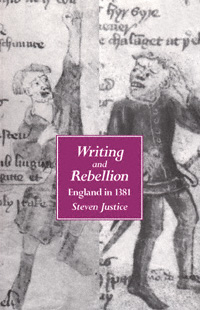 | Title: Writing and rebellion: England in 1381 Author: Justice, Steven 1957- Published: University of California Press, 1994 Subjects: Literature | Literary Theory and Criticism | Medieval Studies | Medieval History | European History Publisher's Description: In this compelling account of the "peasants' revolt" of 1381, in which rebels burned hundreds of official archives and attacked other symbols of authority, Steven Justice demonstrates that the rebellion was not an uncontrolled, inarticulate explosion of peasant resentment but an informed and tactical claim to literacy and rule.Focusing on six brief, enigmatic texts written by the rebels themselves, Justice places the English peasantry within a public discourse from which historians, both medieval and modern, have thus far excluded them. He recreates the imaginative world of medieval villagers - how they worked and governed themselves, how they used official communications in unofficial ways, and how they produced a disciplined insurgent ideology. [brief] Similar Items |
| 38. | 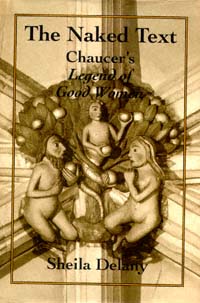 | Title: The naked text: Chaucer's Legend of good women Author: Delany, Sheila Published: University of California Press, 1994 Subjects: Literature | Literary Theory and Criticism | Medieval Studies | English Literature | Gender Studies Publisher's Description: A sequel to her seminal book on Chaucer's House of Fame , Sheila Delany's elegant and innovative study of Chaucer's Legend of Good Women explores what it meant to be a reader and a writer, and to be English and a courtier, in the late fourteenth century. The richness of late medieval art, philosophy, and history are powerfully brought to bear on one of Chaucer's most controversial works. So too are the insights of modern critical theory - semiotics, historicism, and gender studies especially - making this a unique achievement in medieval and Chaucerian studies.Delany's strikingly original readings of Chaucer's Orientalism, his sexual wordplay, his theological attitudes, and his treatment of sex and gender have given us a Chaucer for our time. [brief] Similar Items |
| 39. | 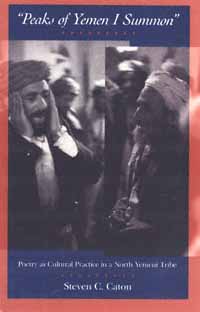 | Title: "Peaks of Yemen I summon": poetry as cultural practice in a North Yemeni tribe Author: Caton, Steven Charles 1950- Published: University of California Press, 1990 Subjects: Anthropology | Cultural Anthropology | Middle Eastern Studies | Literary Theory and Criticism | Medieval Studies | Folklore and Mythology | Language and Linguistics Publisher's Description: In this first full-scale ethnographic study of Yemeni tribal poetry, Steven Caton reveals an astonishingly rich folkloric system where poetry is both a creation of art and a political and social act. Almost always spoken or chanted, Yemeni tribal poetry is cast in an idiom considered colloquial and "ungrammatical," yet admired for its wit and spontaneity. In Yemeni society, the poet has power over people. By eloquence the poet can stir or, if his poetic talents are truly outstanding, motivate an audience to do his bidding. Yemeni tribesmen think, in fact, that poetry's transformative effect is too essential not to use for pressing public issues.Drawing on his three years of field research in North Yemen, Caton illustrates the significance of poetry in Yemeni society by analyzing three verse genres and their use in weddings, war mediations, and political discourse on the state. Moreover, Caton provides the first anthropology of poetics. Challenging Western cultural assumptions that political poetry can rarely rise above doggerel, Caton develops a model of poetry as cultural practice. To compose a poem is to construct oneself as a peacemaker, as a warrior, as a Muslim. Thus the poet engages in constitutive social practice.Because of its highly interdisciplinary approach, this book will interest a wide range of readers including anthropologists, linguists, folklorists, literary critics, and scholars of Middle Eastern society, language, and culture. [brief] Similar Items |
| 40. | 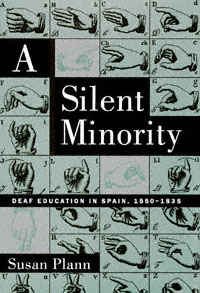 | Title: A silent minority: deaf education in Spain, 1550-1835 Author: Plann, Susan Published: University of California Press, 1997 Subjects: History | Language and Linguistics | Medieval History | European History | Education | European Studies | Medieval Studies | Cultural Anthropology | Cultural Anthropology Publisher's Description: This timely, important, and frequently dramatic story takes place in Spain, for the simple reason that Spain is where language was first systematically taught to the deaf. Instruction is thought to have begun in the mid-sixteenth century in Spanish monastic communities, where the monks under vows of silence employed a well-established system of signed communications. Early in the 1600s, deaf education entered the domain of private tutors, laymen with no use for manual signs who advocated oral instruction for their pupils. Deaf children were taught to speak and lip-read, and this form of deaf education, which has been the subject of controversy ever since, spread from Spain throughout the world.Plann shows how changing conceptions of deafness and language constantly influenced deaf instruction. Nineteenth-century advances brought new opportunities for deaf students, but at the end of what she calls the preprofessional era of deaf education, deaf people were disempowered because they were barred from the teaching profession. The Spanish deaf community to this day shows the effects of the exclusion of deaf teachers for the deaf.The questions raised by Plann's narrative extend well beyond the history of deaf education in Spain: they apply to other minority communities and deaf cultures around the world. At issue are the place of minority communities within the larger society and, ultimately, our tolerance for human diversity and cultural pluralism. [brief] Similar Items |